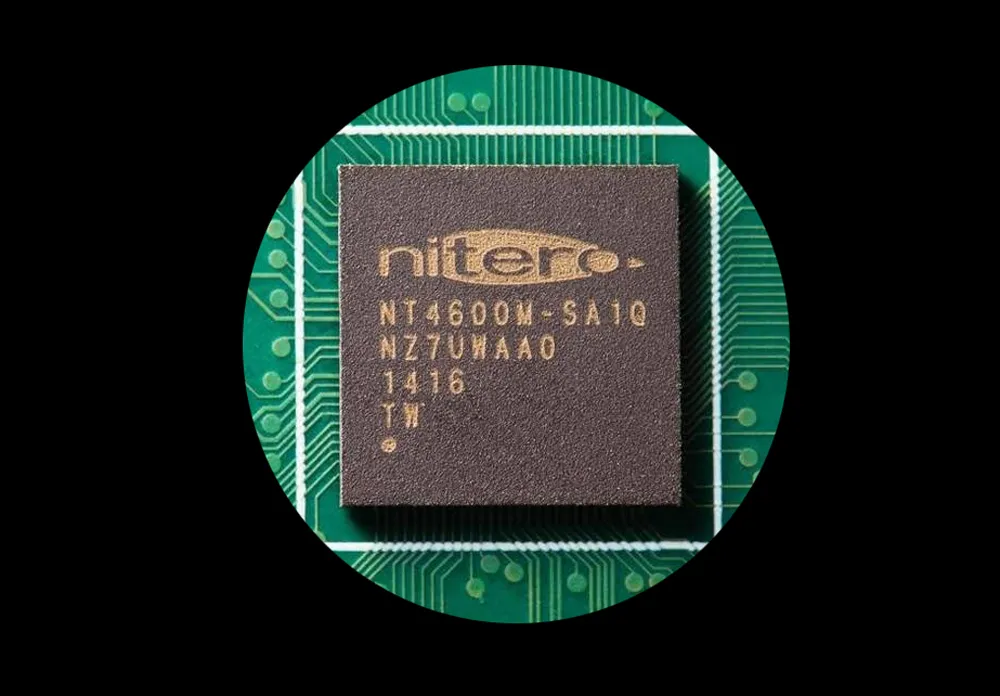Walking around in VR is a fairly surreal experience, until you trip over the cords that is. Cordless desktop VR is a fantasy that many think is a few years away, but according to Nitero, a company focusing on 60Ghz Wi-Fi solutions, it may not be that far.
Nitero has recently shifted its focus fully into the VR space to solve the issue of transmitting data and images wirelessly from the PC to an HMD. Their approach will look to use a combination of 60Ghz wireless transfer and video compression to send data and high-quality visuals to the headset with “latency in the order of 100’s of microseconds.”
It is a tall order, for sure, but Pat Kelly, Nitero’s CEO, is confident that barring “a meteor hitting the Earth,” they will be releasing a product with a hardware partner in the “second half of 2016.” The product will likely initially be an accessory at first, rather than something sold with the headsets themselves.
“We have a large roadmap,” says Sven Mesecke, Nitero’s VP of Business development, “with second and third generation HMDs approaching big resolution numbers we are building our system to scale with the technology. We are making sure that this tech will work with 8K VR and beyond.”
https://www.youtube.com/watch?v=M065tVhG1q8
Looking at the video interview above, you may notice something significant missing, a screen. In the demo I was shown I ‘experienced’ 3Gbps data transfer to a screenless HMD, which was also transmitting head position data back to the PC. Nitero claims this is “nothing like” what the final product will be, and reaffirmed confidence in being able to demonstrate and sell this to consumers later this year.
In a separate demo, I saw the video codec in action inside a wired Oculus Rift DK2. The demo showed video compressed at “about 4:1.” There were no immediately apparent artefacts in the compressed footage, which is good considering that compression will undoubtedly play a large role in making this technology real, rather than vaporware.
Some Key Specs:
• Latency “in the order of 100’s of micro-seconds”
• Configurable compression ratios from 4:1 to “>16:1”
• 4.6Gbps Data Rate
• 3.5Gbps Effective Throughput
• Non Line of Sight, Multiplayer
• Power “as low as” 500mW
There are a number of potential pain points with this technology. For example, it struggles when the antenna loses line of sight, as demonstrated in the video above.
“We will have a solution when we launch that will be able to support that non-line of sight case,” says Kelly but they aren’t quite ready to showcase it yet. The solution will likely use “three RF arrays to provide spatial diversity.” Mesecke says the company will be showcasing the full demo of wireless desktop VR “at E3 this year.”
These are bold claims and despite a lot of pushing on our end, Nitero would not reveal who the partners were, saying they are in heavy discussions with “all” of the major headset manufacturers. Interestingly, in last night’s Reddit AMA discussion Palmer Luckey did state that “there are a range of accessories coming,” including the ones that Oculus will be making themselves like facial interfaces, and of course the Oculus Touch which will also be shipping “in the second half of 2016.” It is possible that this may end up being one of those accessories if it doesn’t end up becoming vaporware.
Interestingly, Nitero claims that its solution will actually be “cheaper” than the cords that the companies are currently using, which could eventually save on manufacturing costs. Something potentially meaningful in the wake of the backlash of the Oculus Rift pricing where enthusiasts are looking for ways to shave the prices down from $600.
Only time will tell if Nitero can live up to its bold claims, and who the established partners are, but the fact of the matter is if this works and is productized in 2016 it could mean massive things for the VR space. In many demos of room scale VR I have experienced, for example, a ‘cord wrangler’ has been present in the room to make sure I don’t trip and fall. It highlights one of the obstacles for wired VR, the better the room scale experience the more likely you are going to forget about being ‘tied up and twisted the way you don’t want to be.’





























